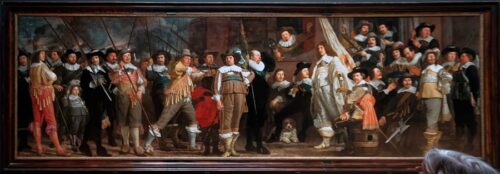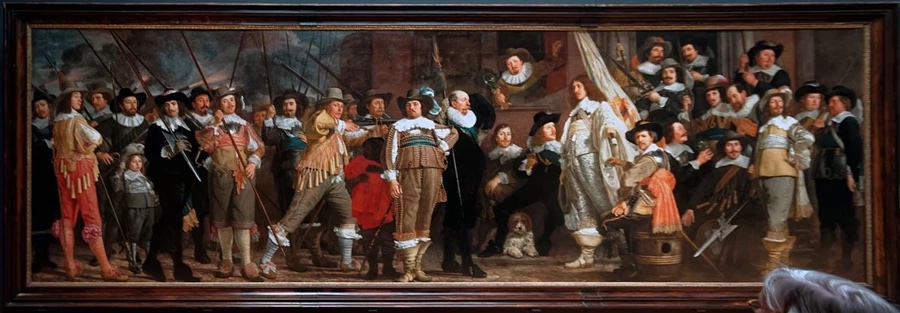A governor demanded religious persecution of the Quakers. The citizens of Flushing refused.

To the Right Honorable Governor of New Netherland Peter Stuyvesant:
You have been pleased to send unto us a certain prohibition or command that we should not receive or entertain any of those people called Quakers because they are supposed to be, by some, seducers of the people. For our part we cannot condemn them in this case, neither can we stretch out our hands against them…We desire therefore in this case not to judge lest we be judged, neither to condemn lest we be condemned, but rather let every man stand or fall to his own Master. We are bound by the law to do good unto all men, especially to those of the household of faith.
With those words, Edward Hart, the town clerk of what is now the Queens neighborhood of Flushing, New York, began a powerful 650-word document known as the Flushing Remonstrance. It was December 27, 1657. Hart wrote on behalf of the 30 inhabitants of the village who also boldly signed their name below his.
This was a defiant shot across the bow of the state, personified by Governor Stuyvesant. It was an act of resistance and an early declaration in favor of the freedom of peaceful worship. Moreover, it was not a self-serving stand for the freedom of those who signed it (none of them were Quakers), but rather a defense of the freedom of others.
Think of it in these terms: In contravention of the practice of tolerance back in the mother country of the Netherlands, Governor Stuyvesant promulgated a policy of intolerance in the Dutch settlements of New York. He aimed to persecute those who did not adhere to the Dutch Reformed Church, and the nonconformist Quakers were his prime target. In this response, the citizens of Flushing essentially stated, “You are commanding us to persecute Quakers. We will not. So take your intolerance and stick it where the sun doesn’t shine.”
If you are inclined to stop reading because freedom of peaceful worship is not important to you—perhaps you are not of any faith or you believe your faith is not threatened—think again. Freedom in one sense is indivisible; a successful attack on one of its elements invites assaults on the others. Allow the state to breach one wall of freedom’s fortress and you have invited it inside, where its agents will work to bring down the remaining walls.
A government that can tell you what to think and say and punish you for thinking and saying what it disapproves, will not self-limit its despotism there. This is likely what Voltaire had in mind when he reputedly asserted, “I disagree with what you say but will contend to the death for your right to say it.” The timid multitudes stand idly by as freedom is crushed, doing nothing unless the danger appears on their own doorstep. The uncommonly courageous few will rise far sooner, and it is to them that all of us who love freedom owe a special gratitude.
Governor Stuyvesant’s policy of persecution had begun in 1656 with an ordinance banning unauthorized religious meetings. Quaker preachers were harassed, arrested, jailed, and fined. In Flushing itself, a Baptist pastor was imprisoned and then exiled for the “crime” of baptizing without a license from the Dutch Reformed officialdom.
The Flushing Remonstrance stirs my blood with an abiding appreciation for principled courage. How fitting for such an enlightened document to appear two days after Christmas! Inspired by Jesus’s teachings, the brave souls of Flushing were likely full of hope for the good that peace and tolerance could bring in the New Year. They concluded their statement thusly:
The law of love, peace and liberty … condemns hatred, war and bondage … desiring to do unto all men as we desire all men should do unto us….Therefore if any of these said persons come in love unto us, we cannot in conscience lay violent hands upon them, but give them free egress and regress unto our Town, and houses, as God shall persuade our consciences….
Stuyvesant reacted in anger. Determined to quash the spirit of the Remonstrance, he dissolved Flushing’s town government and put his own cronies in charge. He arrested four of the signers of the Remonstrance, including Edward Hart. To his credit, the elderly Hart went to jail but never recanted.
Relief from Stuyvesant’s harsh rule finally arrived in 1663, but not by the hand of any government. The Dutch West India Company, sponsor and investor in the Dutch colonies of North America, dispatched a letter to Stuyvesant ordering him to stop religious persecution. So much did Thomas Jefferson later revel in the spirit of the Flushing-inspired motto, “Rebellion to Tyrants is Obedience to God”, he inserted it on his personal seal.
Today, the Flushing Remonstrance is known as “the religious Magna Carta of the New World.” It proved to be a major influence on America’s Founders to enshrine freedom of worship in the Bill of Rights, more than a century after the citizens of Flushing defied a Governor.
God bless America.
For additional information, see:
- Document that Inspired Bill of Rights on Display at Federal Hall National Memorial
- The Flushing Remonstrance by Michael Peabody
- 350th Anniversary of the Flushing Remonstrance: A Celebration of a Document and the Principles It Embodies

Lawrence W. Reed
Lawrence W. Reed is FEE’s President Emeritus, Humphreys Family Senior Fellow, and Ron Manners Global Ambassador for Liberty, having served for nearly 11 years as FEE’s president (2008-2019). He is author of the 2020 book, Was Jesus a Socialist? as well as Real Heroes: Incredible True Stories of Courage, Character, and Conviction and Excuse Me, Professor: Challenging the Myths of Progressivism. Follow on LinkedIn and Parler and Like his public figure page on Facebook. His website is www.lawrencewreed.com.
This article was originally published on FEE.org. Read the original article.

